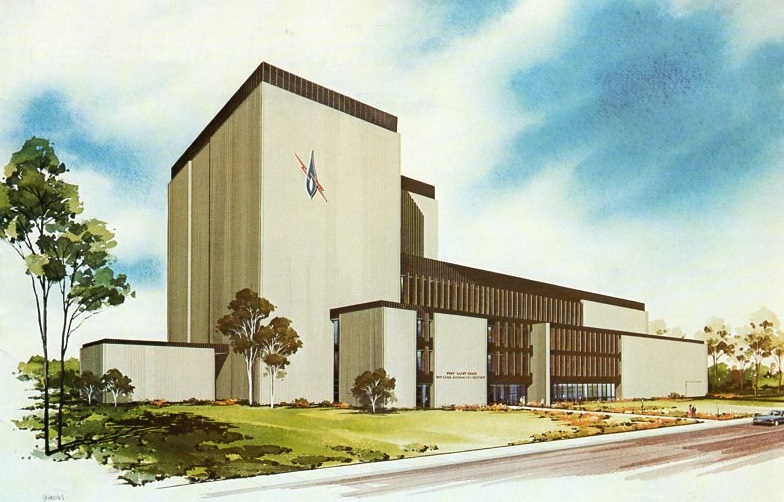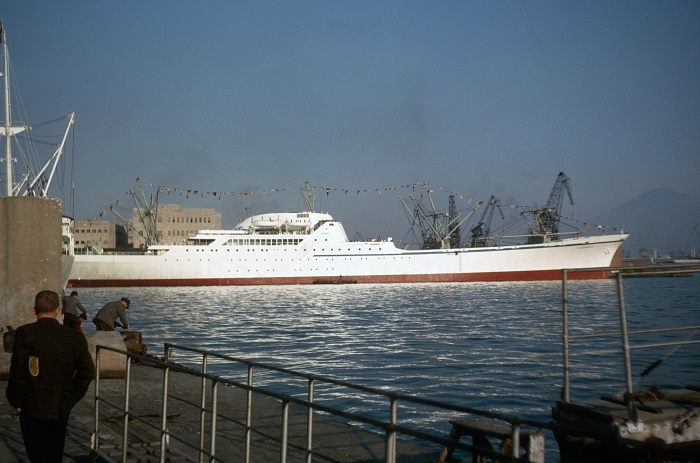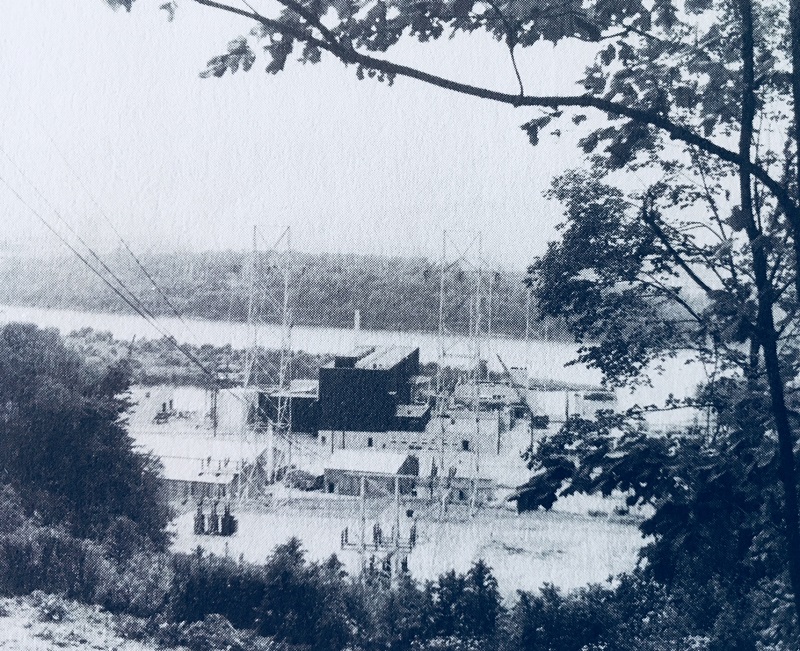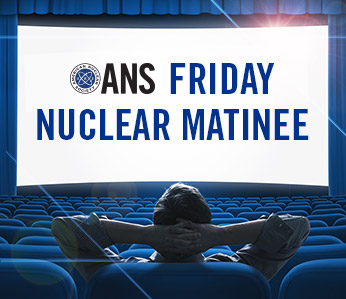National Engineers Week is February 18-24
Did you know that National Engineers Week (NEW) is starting Sunday, February 18? So, it's time to celebrate the engineering profession and help others discover engineering!
The ANS Nuclear Cafe is a blog owned and edited by the American Nuclear Society. Information contained on the ANS Nuclear Cafe has been provided by numerous sources. Therefore, the American Nuclear Society assumes no responsibility or liability for the accuracy of information contained herein. DISCLAIMER: The views expressed in posted articles do not necessarily reflect the views of the American Nuclear Society. The views expressed here are those of the individual authors. ANS takes no ownership of their views. The American Nuclear Society assumes no responsibility or liability for any use or operation of any methods, products, instructions, or ideas contained on this site.

A message from Goodway Technologies
Optimizing Maintenance Strategies in Power Generation: Embracing Predictive and Preventive Approaches
Did you know that National Engineers Week (NEW) is starting Sunday, February 18? So, it's time to celebrate the engineering profession and help others discover engineering!
The Fort St. Vrain project was innovative in more than one respect, and while it did not blaze the trail in HTGR (High Temperature Gas-cooled Reactor) commercialization - a feat accomplished by the Peach Bottom Atomic Power Station - it did considerably advance the technology toward full commercial operation and duplication on a wide scale through some significant design changes. One of the most interesting of these was the use of a prestressed concrete reactor vessel (PCRV) for the reactor itself and primary components instead of a steel vessel.
An old hand at startups by age 31, Bret Kugelmass is not one to do things by halves. He believes climate change poses a mortal threat to humanity, and that the widespread adoption of nuclear energy is the only way to stem the tide of catastrophe.
https://www.youtube.com/watch?v=6fJK079Qtgg

What became the Fort St. Vrain Nuclear Generating Station began as a study almost two decades before the plant was completed and led to years of effort to construct a commercial high-temperature gas-cooled nuclear power plant. While the effort did not ultimately lead to a successfully competitive alternative to light water designs, it did add considerably to the knowledge and experience base of gas-cooled reactors specifically and nuclear power generally. We will chronicle the effort in images - mostly using those from an incredible press package in the author's collection. (Photos will enlarge when clicked.)
Courtesy of the U.S. Department of Energy Office of Nuclear Energy
Testimony Before the New Jersey Senate Environment and Energy Committee and the Assembly Telecommunications and Utilities Committee

NS Savannah, mid-1960's. Photo taken by crew member Dan Campbell, courtesy NS Savannah Association, Inc.
With the increasing concern these days about the pollutants that commercial ships traveling all over the world's oceans put into the air, there's a rumbling undertone starting again about moving to nuclear powered commercial (that is, non-military) ships. There was a "First Nuclear Ship" era already, and it did give us some valuable lessons.
 Students: we know the value of a couple thousand dollars. Receiving an ANS scholarship could mean the opportunity less shifts at work and focus on classes, buying textbooks, or even just eating a bit better (and healthier) than ramen noodles every day. I'm not here to tell you why you can use some extra money. I'm here to tell you all the other reasons why applying for an ANS scholarship is valuable.
Students: we know the value of a couple thousand dollars. Receiving an ANS scholarship could mean the opportunity less shifts at work and focus on classes, buying textbooks, or even just eating a bit better (and healthier) than ramen noodles every day. I'm not here to tell you why you can use some extra money. I'm here to tell you all the other reasons why applying for an ANS scholarship is valuable.
By now we all know that Energy Secretary Perry's initiative to get the Federal Energy Regulatory Commission (FERC) to consider longevity of fuel supply has fallen and been replaced with an order to study the situation and, hopefully, come up with some kind of solution within 60 days. FERC's press release from yesterday reads in part thus:
Breaking: In a unanimous vote, the Georgia Public Service Commission (PSC) has APPROVED a multi part motion by Commissioner Tim Echols which allows the Vogtle 3 and 4 project to move forward, but which reduces burden on ratepayers and places more on shareholders of the owners. Georgia Power accepted the new conditions immediately after the PSC vote and will continue construction of the project under the new management structure, which itself was approved by the Commission as one part of Echols' proposal (although it neither approved nor disapproved of the actual owners' agreement terms; it simply approved the project management structure).
There have been a number of significant and/or interesting developments in the nuclear energy field recently, with large light-water reactor business taking the fore. Here are some highlights:

Shippingport Atomic Power Station as pictured in original press package; photo PR-19109
•Shippingport started up 60 years ago today. On December 2, 1957, the reactor at the Shippingport Atomic Power Station, which was America's first, full-scale nuclear power plant, was made critical for the very first time. This event occurred fifteen years to the day after the historic first startup of the first nuclear reactor ever - the CP-1 pile near Chicago. Many important people, including Admiral Rickover, were present at the startup.
"Some recent work by E. Fermi and L. Szilard, which has been communicated to me in manuscript, leads me to expect that the element Uranium may be turned into a new and important source of energy in the immediate future." - Albert Einstein, letter to President Franklin D. Roosevelt, August 2, 1939
A short while back in early November, I decided to conduct a poll on Twitter - that oft-maligned, mostly misunderstood, microblogging site on which instantaneous outreach is seriously tempered by a roughly 19-minute-post-visibility lifetime. Even with the limitations, I thought my first-ever use of the polling tool would produce a pretty predictable result. I was off the mark.
Loyalty is inconvenient.

When you hear the friendly voice of Joe Washington, you know that it's time for another in the excellent series of "Vogtle Timeline" videos presented by Georgia Power. This most recent update covers some important ground - namely, the change in construction arrangements following Westinghouse's bankruptcy and how the project goes on from that point. Not only is physical progress at the plant site displayed, but community outreach and impact are also shown in this well produced video.
The story of America's first successful marine nuclear power plant as used on the submarine USS Nautilus is well known. What is less known today is the real story behind the competing, and in the end losing, design - an "advanced" design using sodium cooling that in some quarters was first thought to be the better choice.
A packed room was on hand for this morning's panel session on Used Nuclear Fuel Management, and following the interesting presentations by several speakers the crowd took part in an energetic and, at some times, lively discussion on where we are as a nation and as an industry on the issues of storage of used fuel and the potential for creation of storage or even, possibly, a repository. Given the present political environment, there's motion on the latter, which led to some of the liveliness of the discussion. We'll give just some of the remarks made by presenters below.